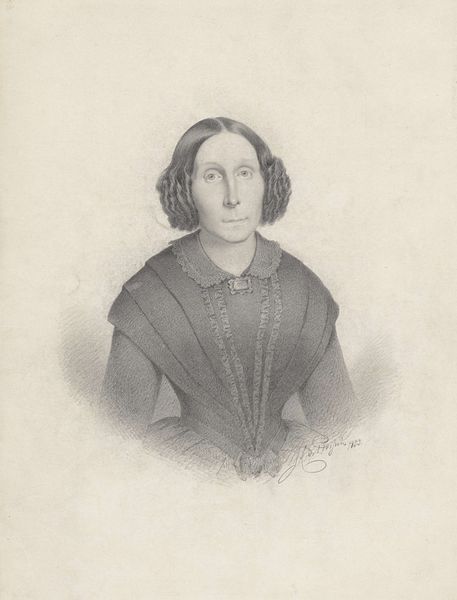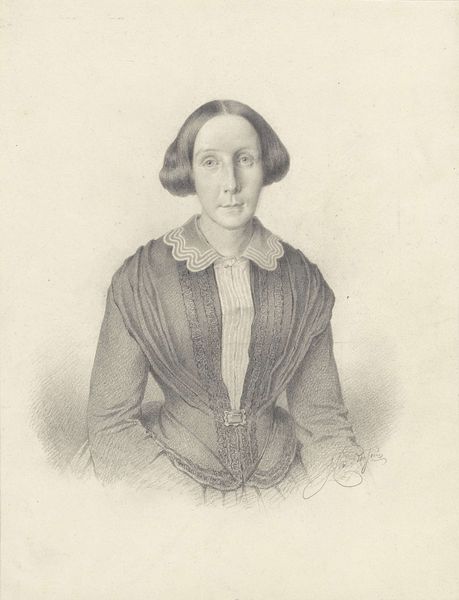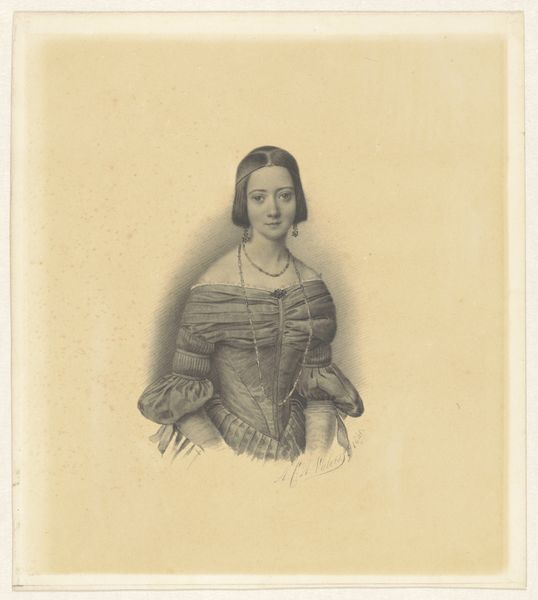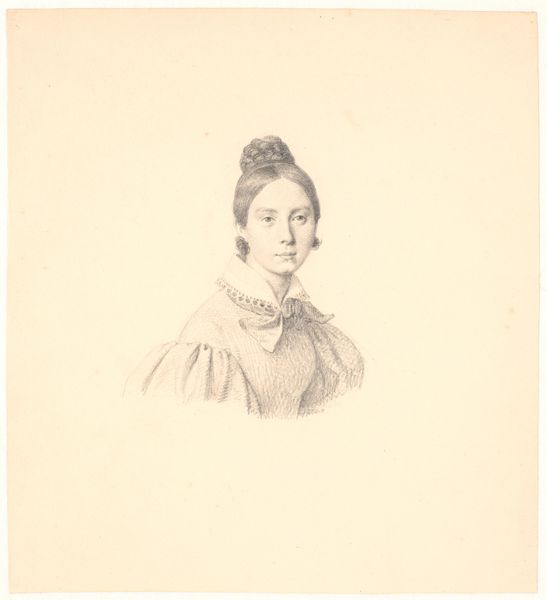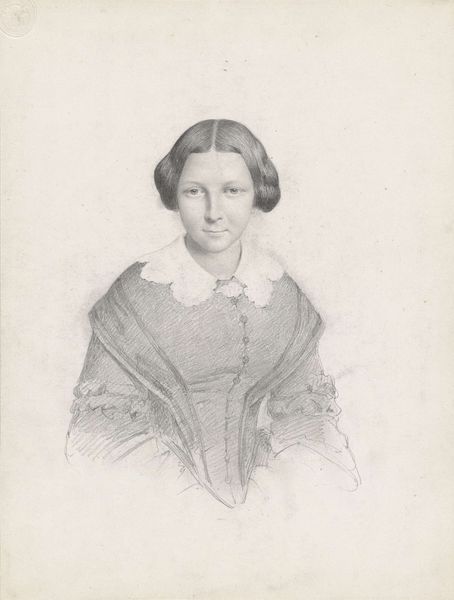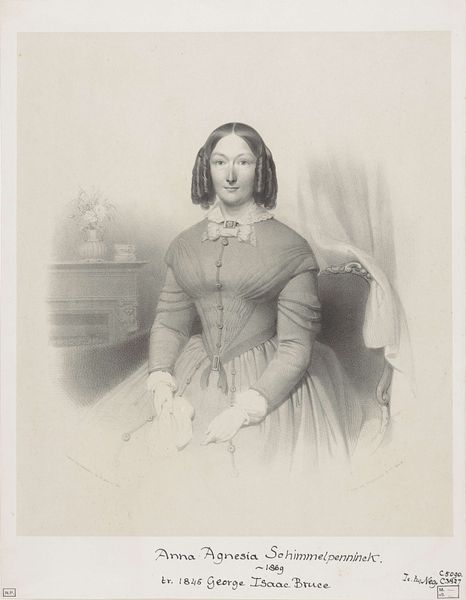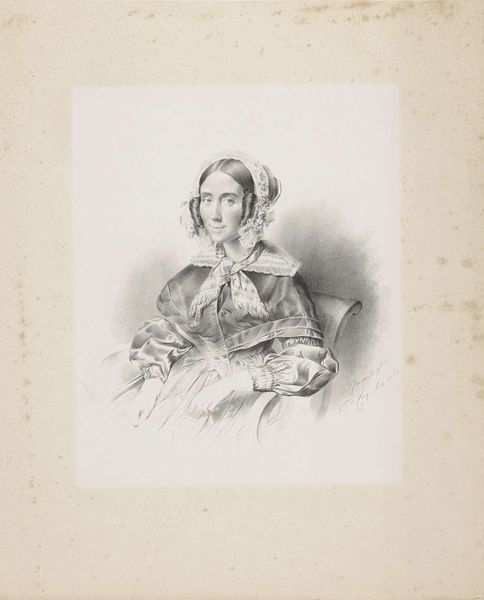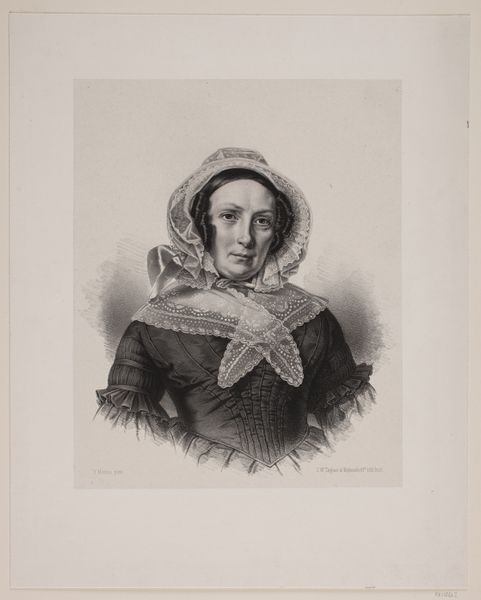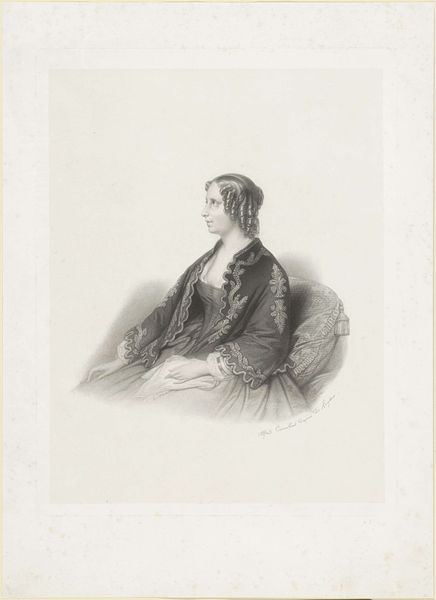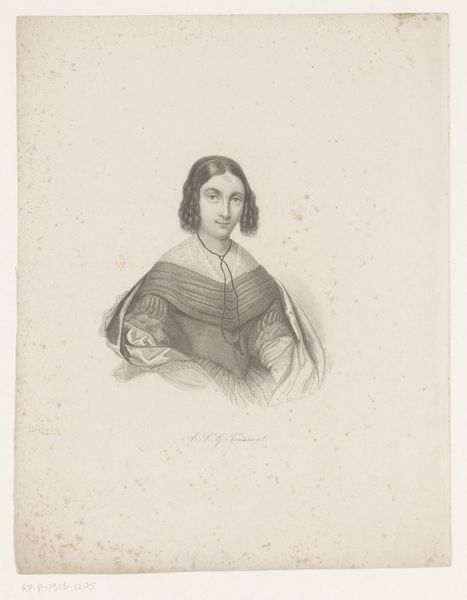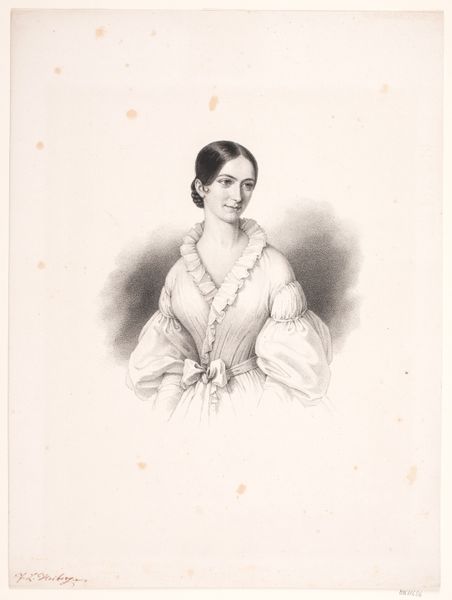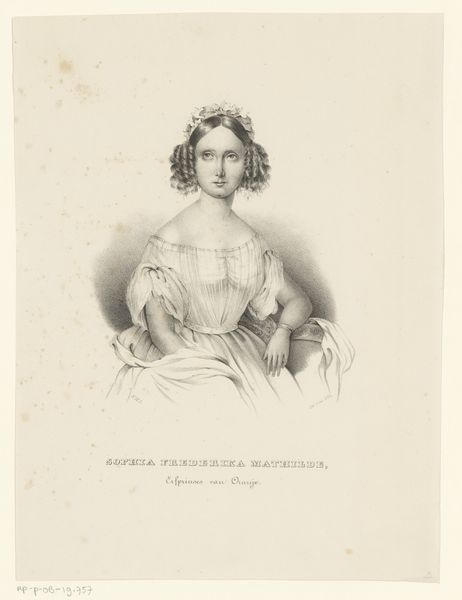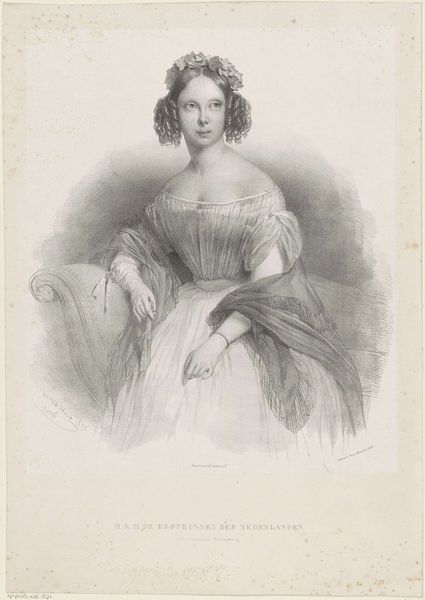
drawing, pencil
#
portrait
#
drawing
#
pencil sketch
#
old engraving style
#
caricature
#
romanticism
#
pencil
#
portrait drawing
#
academic-art
Dimensions: height 300 mm, width 218 mm
Copyright: Rijks Museum: Open Domain
Curator: Looking at this "Portret van een onbekende vrouw" by Anna Catharina van Boekeren, dating roughly between 1828 and 1846, what are your initial thoughts? Editor: There’s a striking formality to it. The balance is meticulously managed, especially the soft gradations achieved with what looks like primarily pencil work. Curator: Exactly. Consider the meticulous craft involved here. In that era, the ability to render such detail using only a pencil was a marker of both skill and access to materials. We also should reflect on the economics surrounding artistic creation in the 19th century and who had the leisure time to either be a subject or an artist. Editor: It's certainly illustrative of Romantic-era portraiture but rendered through a unique interpretation of academic art with a somewhat austere presentation. Note how the soft lighting contributes to the somber mood. The focus is primarily on tonal variation. Curator: How do you interpret this woman’s place within that historical moment through this portrayal? What sort of constraints are implicit when it comes to her representation in that cultural environment? The artist also was an unindentified female - an amateur possibly or simply unknown. Does it carry symbolic meaning? Editor: Symbolism can be derived, yes, yet the way her garments are subtly defined offers a kind of elegant reserve, it is almost like she doesn't call for attention but instead reflects the delicate application of tone that guides the gaze. Her gaze and form dictate my perception. Curator: I agree there’s an intentional understatement, but perhaps also imposed restraint. The softness could represent her social position rather than simply being an aesthetic choice, given it being pencil, what it takes to procure high quality materials. These factors give texture and meaning to our engagement with the portrait and give it context within the history of portraiture in general. Editor: In the end, by studying its construction and pictorial features, this drawing presents a compelling look into the composition that makes us ponder representation and societal constraints of that time. Curator: The piece lets us understand both her and possibly the author, because in their lines, forms, the social fabric becomes apparent.
Comments
No comments
Be the first to comment and join the conversation on the ultimate creative platform.
